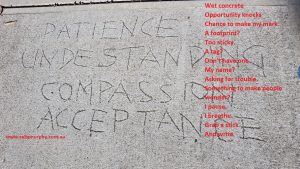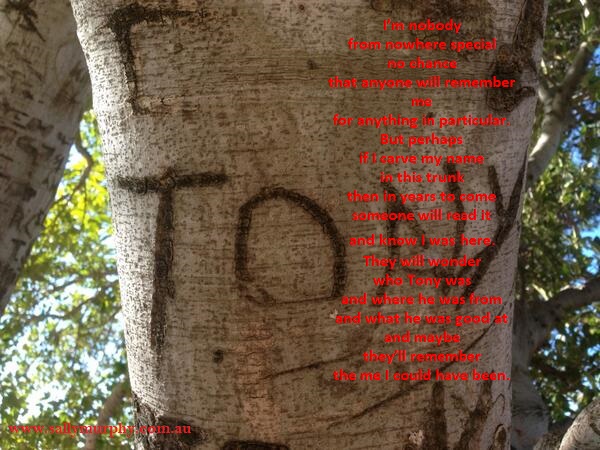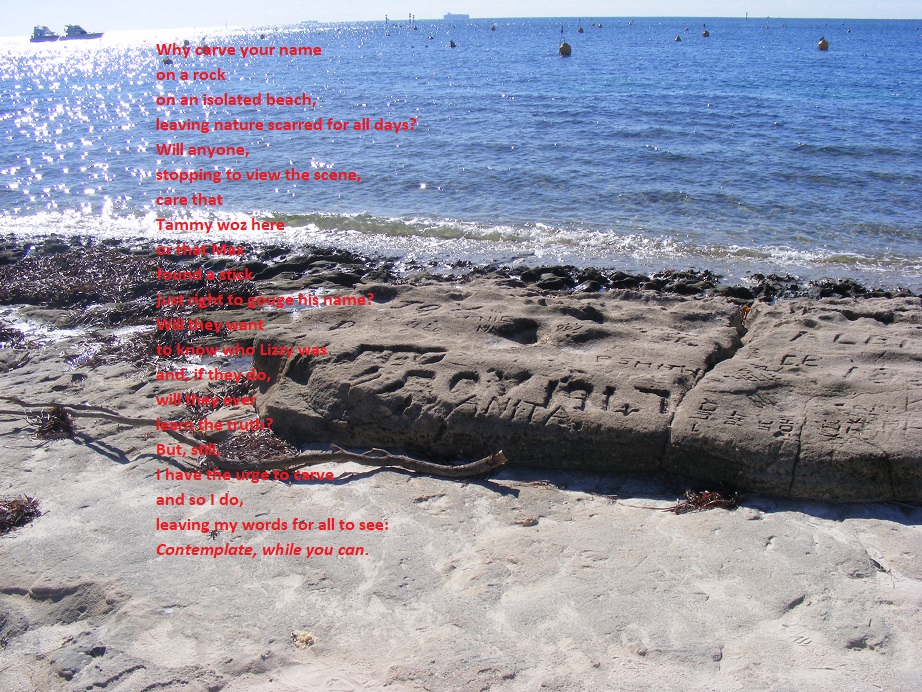It’s Friday, which means it’s Poetry Friday and, once this post is written, I will have managed to post every week this year! Of course I do realise it’s only week 3, but still a good sign that I’m going to do better this year).
First up, thanks to everyone who visited last week, when I hosted the weekly round up, and for all the lovely comments and messages of support for Australia. Like many Australians, I am blown away by the generosity coming from around the world – not just in the form of donations, but also messages of solidarity and hope as well as so many statements urging leaders to wake up and take more drastic action to prevent climate change and start saving our planet.
Onto the poetry. This week I set the goal to write something – anything – every day, preferably before heading out the door to my dayjob. And I managed to write something everyday. More pleasing, most of it was poetry, including progress on a verse novel I started before Christmas. Early days, but it’s just lovely to be creating.
On Monday, on my early morning walk, I spotted some words carved into the footpath – obviously done while the concrete was still wet. I snapped a photo and walked home pondering what would lead to someone carving those words there. More often you see initials, or paw prints or – and I love spotting these – the prints of leaves that have fallen onto the setting concrete. I was so taken by these words that I didn’t even notice some spelling quirks (which is most unlike this teacher!).
So, when I sat down after breakfast to write, it didn’t surprise me that my thoughts went back to that footpath. I wanted to explore not the meaning of the words, but the intention of the scribe. Here’s what I came up with:

The poem reads:
The Scribe
Wet concrete
Opportunity knocks
Chance to make my mark.
A footprint?
Too sticky.
A tag?
Don’t have one.
My name?
Asking for trouble.
Something to make people wonder?
I pause.
I breathe.
Grab a stick
And write.
(Copyright Sally Murphy, 2020)
It was only later that I remembered I had written on a similar topic before and went searching for those poems, first drafted on a visit to Rottnest Island (off the WA coast and home to the world-famous quokkas). I was there on a retreat with SCBWI pals, and on a sketch and scribble we stopped under this tree, which, from memory, may have been a young Moreton Bay Fig. I was drawn to the many names carved into the trunk and initially a bit cross that people would do this to a tree. That’s where this poem came from:

The poem reads:
The Name Tree
You are a thing of beauty
stretching grey-brown limbs skywards.
A testament to your will
to stand
against stiff sea-breezes
and salty spray.
But I don’t get why your trunk
must be scarred
by careless humans
wanting to leave a sign
that they were once here:
Ron + Therese
Sue
Hadly, Tony and
KC
all were here.
But now they’re not
and all that’s left of them
is their marks
scratched into your bark.
(Poem copyright Sally Murphy)
After I’d written that I had a little longer to sit and think. At the time I was working on a collection of poetry with paired poems, each pair looking at the same topic from differing perspectives. So I started to wonder what the other perspective was here. And I started to think about why we have this urge to leave our mark. Tony’s name was the most prominent, and I started to think of him as a small boy wanting to make a big mark, in the hope those who read it would imagine him as perhaps bigger, more accomplished than he saw himself. This was the result:

The poem reads:
The Tony Tree
I’m nobody
from nowhere special
no chance
that anyone will remember me
for anything in particular.
But perhaps
if I carve my name
in this trunk
then in years to come
someone will read it
and know I was here.
They will wonder
who Tony was
and where he was from
and what he was good at
and maybe
they’ll remember
the me I could have been.
(Poem copyright Sally Murphy)
On another walk on Rottnest, this time alone, I came across some rocks on the shore where, again, people had been carving their names. I sat on one of these rocks and just breathed in the amazing view, but I couldn’t help but again wonder about the need to leave a mark. I had no urge, but my younger self probably would have, and I wondered what could justify needing to carve like that. What would someone crave that would really speak to future visitors? This is what I wrote:

The poem reads:
Grafitti
Why carve your name
on a rock
on an isolated beach,
leaving nature scarred for all days?
Will anyone,
stopping to view the scene,
care that
Tammy woz here
or that Max
found a stick
just right to gouge his name?
Will they want
to know who Lizzy was
and, if they do,
will they ever
learn the truth?
But, still,
I have the urge to carve
and so I do,
leaving my words for all to see:
Contemplate, while you can.
(Poem copyright Sally Murphy)
I imagined some philosopher, wanting people to use those rocks to seize a few moments for quiet contemplation, but can also see now that that ‘while you can’ could also be a bit of a warning – ie contemplate this natural beauty while it’s still here. And it’s only while I write this post that I wonder if my imagined philosopher was also the person who, years later, left those words in the path for me to see?
So I am poeming once more – with new poems and reconnecting with older ones. – and this is good. Just in time, too, because this week I am having an ‘In Conversation’ with my amazing poet friend Rebecca Newman at Paperbird Bookshop in Fremantle. If you are nearby, drop by to hear us chat all things children’s poetry (or as much as we can fit into one session!). It’s a free event, to celebrate the end of Rebecca’s residency at Paperbird. You can book here. And, if you are across the country or across the world, I’ll share some highlights next Poetry Friday.
Phew. What a long post. I’m sure you are itching to see what other poetry goodness has popped up around the blogosphere today. the roundup is over at Reading to the Core, thanks to Catherine who is hosting this week.
Love the poem you found carved in concrete. Someone was thinking of the good we can do and how their words left behind might inspire action.
Thanks for dropping by and commenting Ramona.
These are all so wonderful! I love seeing the inspiration for each of the poems.
Thanks Becky.
So much to ponder in this rich post, Sally! My OLW for 2020 is perspective, so I appreciated your poems delving into the motivation of Tony and the rock carvers. Why are we compelled to make are mark? That is a question definitely worth contemplating!
Thanks Catherine. Worth contemplating indeed.
I like how “The Name Tree” begot the “The Tony Tree” and the different p.o.v. they both take. Also how one poem begets another. Not sure about all the marking and tagging, maybe it comes from a need to create in some way…
Yes, Michelle, I think it is an urge to create but also to claim.
Sally, we had a new walkway of fresh concrete and a neighborhood child decided to make her mark. No one understood the reason for this and why someone would want to deface another’s property. I appreciate the time you took to ponder and create your own responses to what you saw.
The question remains why do some people leave nature scarred for all days?
Yes, Carol. When people are surprised at the concrete thing I am always a bit surprised that they’ve forgotten being young, but also this apparent human urge to leave a mark. I’m not advocating the graffiti, but am certain it is a primal urge.
In agreement with Mary Lee, I absolutely love process posts. You have inspired me to return to a wonder from my travels in the UK this past summer. While climbing to the tippity top of Salisbury Cathedral’s spire, our guide pointed out bits of medieval graffiti. Fascinating stuff! https://www.visitwiltshire.co.uk/blog/read/2017/04/salisbury-cathedral-graffiti-tour-b218
Thank you, Sally. Cheers!
Thanks for visiting Christie, and for sharing the link – you’ve made me want to visit the cathedral and to really think about the fact graffiti is not anything new at all.
I love process posts! Thanks for leading us along your journey of discovery, thinking, wondering and poeming!
Thanks Mary. Funnily, putting the post together was very mcuh a process. i started out just to share the poems, but it was the weaving together that sorted my own thoughts.
I love each poem you shared. I won’t be able to pass by words/names engraved into nature again without stopping to think about the giver and receiver. Thank you, Sally.
Thank you Kimberly, and thanks for dropping in.
I agree with all the above remarks. Without a name carved on a plate nailed to a post up North of our state, we would never have known the early explorers who visited. Without the Aboriginal handprints and other rock art, we would never have known the culture that existed so many thousands of years ago. I hate the seemingly senseless graffiti sprayed everywhere, but it seems that the younger generation also has the urge to leave their mark. Keep poeming. I love it!
Thank you Mary!
I love all the directions your post leads with different points of view. It makes me stop and think–just what a good poem should do.
Thank you Kay, and thanks for reading.
I’m drawn to graffiti, too–I’m collecting photos that move me. Must start turning them into poems! Thanks for the inspiration!
I especially like “maybe / they’ll remember / the me I could have been.”
I look forward to seeing where your images take you JoAnn! Thanks for stopping by and commenting.
I love the whole idea of your going beyond your first judgments and looking at it from another POV. It reminded me of all the tattoos I see that are works of art and are often done for deeply emotional reasons. I used to think, Why mar something beautiful and perfect?” but then go beyond that. I really enjoyed your post.
True Janice. I am not a big tattoo fan generally, but for many people there is a lot of thought and meaning put into them. Who am I to judge?
Interesting to read your first impressions, the frustration for someone who would leave a name, carve a tree or rock, then you seemed to find some compassion (patience, understanding, acceptance) for those who needed to make a mark. The final words of that one poem are poignant: “they’ll remember/the me I could have been.” I walk in several parks with rocks and lots of trees, perhaps have not noticed, but I have not seen any graffiti left. Now you’ll have me looking, Sally!
Thank you for dropping by Linda. I bet once you start looking it will be everywhere.
Oh, you ARE poeming….I love it. I love the idea of a collection of verses responding to each other. That name tree. Wow! What an inspiration. I love the whole vibe of your post. When I travel I am drawn to the graffiti of a place. I love to spot what’s the same or different. Sometimes, that ends up in my poeming too. Wet cement. What a medium. I like the “cheek” in the scribe’s voice…as well as the contemplation. A deliberate act to write!
Thank you Linda. My collection didn’t find a publisher, but I have made good use of several of the poems. And yes, travel throws up all kinds of interesting tidbits, including graffiti and street art.